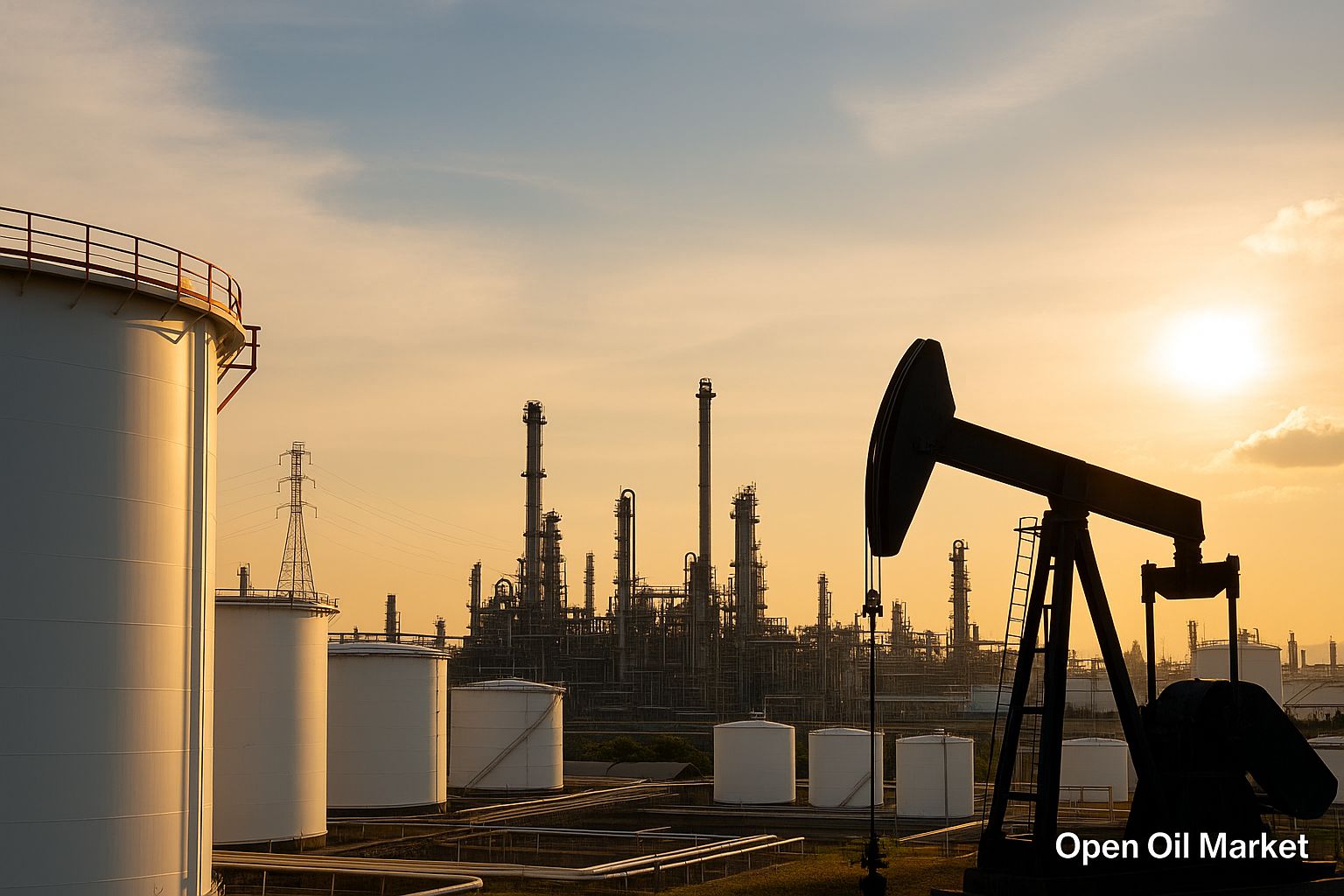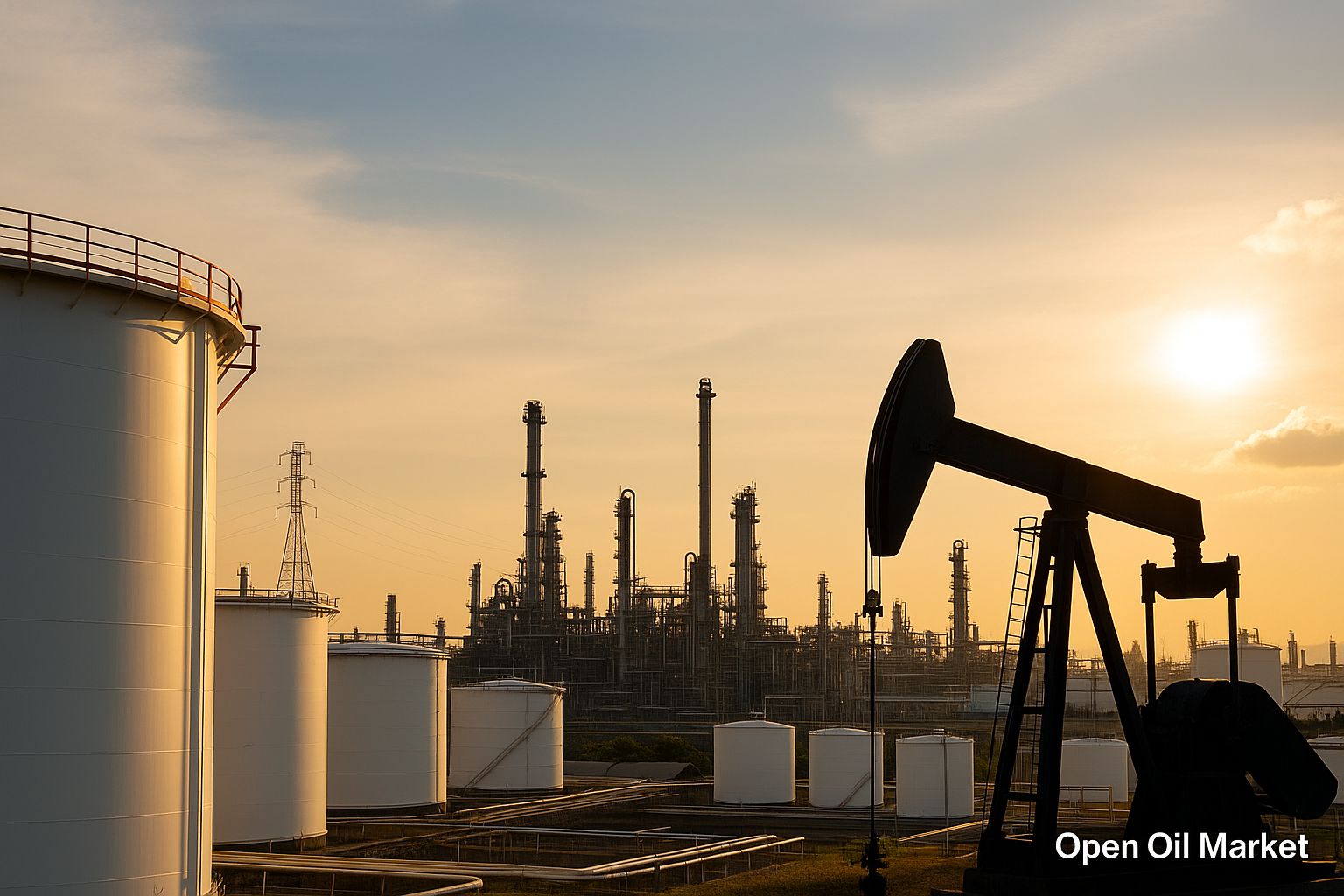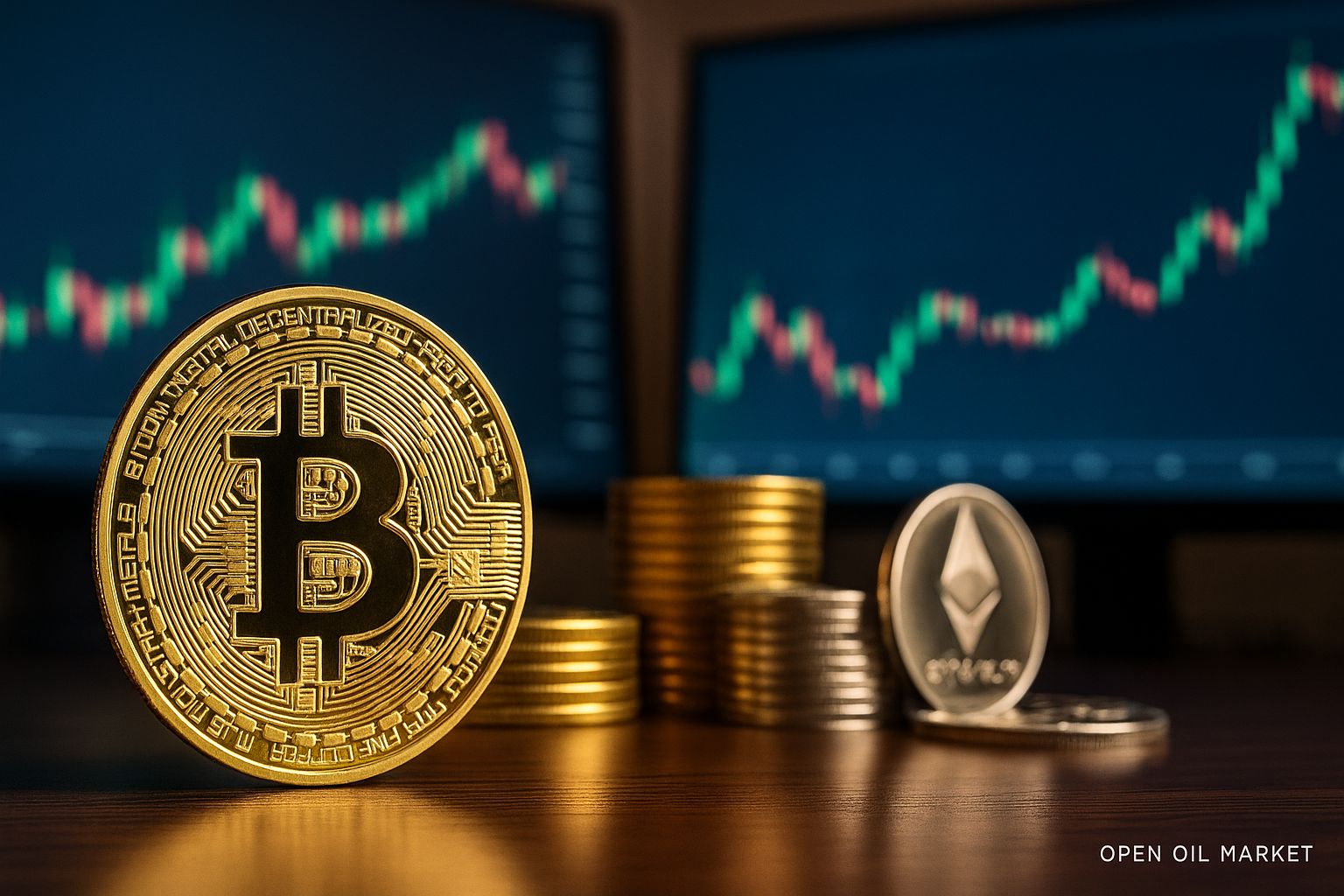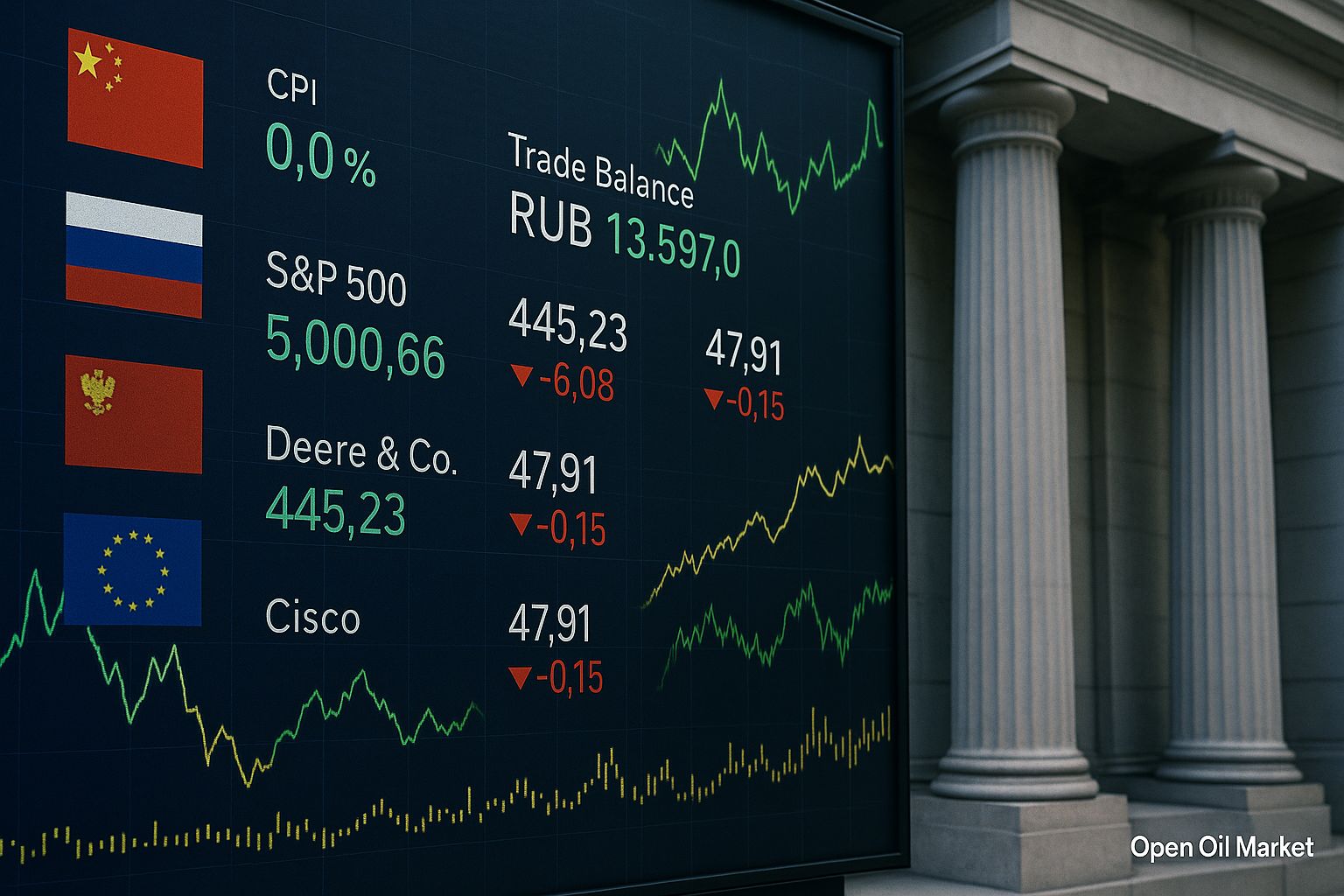
Current News in the Fuel and Energy Sector as of August 11, 2025: Tightening Sanctions on Russian Oil, Stabilization of Brent Prices Below $70, Export Ban on Oil Products in Russia, Gas Reserves Refilling in Europe, and Renewable Energy Records.
The recent developments in the fuel and energy sector as of August 11, 2025, are attracting significant attention from investors and market participants. Washington continues to intensify sanction pressure on the largest buyers of Russian energy resources. Following measures against India, Western allies have agreed on additional tightening of price limits on Russian oil, escalating geopolitical tensions. Concurrently, global oil prices, after a recent decline, show relative stabilization below $70 per barrel as the proactive policy of OPEC+ and the prospects of negotiations instill cautious optimism in the market. In Russia, a complete export ban on oil products remains active to support the domestic fuel market. Meanwhile, Europe is rapidly replenishing gas reserves ahead of winter, diversifying supplies, and strengthening its energy security. Despite a strategic shift towards energy transition, demand for traditional energy resources such as coal remains high in certain regions due to a need to ensure reliable energy supply. Below, we outline the details of key news from the commodities and energy sectors.
The West Tightens Oil Sanctions
The Western coalition countries have taken new steps to restrict Russia's revenue from oil exports. Canada, the European Union, and the United Kingdom have announced a reduction in the price cap on Russian oil from $60 to $47.60 per barrel, with the updated price ceiling set to take effect on September 3. This measure aims to intensify economic pressure on Moscow by reducing its oil revenues and limiting funding capabilities for military actions. Concurrently, the U.S. continues to expand its sanctions campaign: President Donald Trump previously signed an order imposing a 50% import tariff on goods from India in response to New Delhi’s procurement of Russian oil. Washington is now threatening to extend similar measures to China, with the U.S. Treasury Department openly considering a 100% tariff on all exports from China to the U.S. as punishment for ongoing purchases of Russian oil by Chinese companies. This "carrot and stick" strategy, balancing tough sanctions with attempts at trade dialogue, demonstrates the U.S. resolve to reshape global energy flows to its advantage. The new restrictions heighten uncertainty in the global oil market, forcing refiners and traders to re-evaluate supply chains in light of potential barriers.
Delhi and Beijing Resist Washington's Pressure
Major Asian consumers of Russian oil are firmly asserting their intention to follow their interests despite external pressure. India has publicly labeled U.S. claims as unfounded and emphasized that it will not reduce imports of Russian crude, which is vital for the country's energy security. After the onset of the Ukrainian crisis, traditional Middle Eastern suppliers to India pivoted their oil to the European market, prompting New Delhi to seek new sources; currently, about 40% of India's oil imports come from Russia. Authorities in India have stated they will continue purchasing Russian energy resources even after the implementation of American tariffs.
- National Interests Above All: India's key priority is to ensure affordable fuel prices for the population and the economy. Importing oil from Russia helps keep gasoline and diesel prices in check on the domestic market.
- Western Double Standards: New Delhi points out that Western countries have not ceased trade with Russia. EU countries continue to purchase gas, petrochemicals, fertilizers, and other goods from Russia, while the U.S. imports specific categories of Russian resources (e.g., nuclear materials). This renders demands for a complete cessation of cooperation with Russia as unfair and hypocritical.
Simultaneously, Beijing also rejects Washington's ultimatums. China's Foreign Ministry stated that coercive policies will yield no results; the country will uphold its sovereignty and purchase energy resources in ways that align with its national interests. Despite threats of sanctions, China has clearly indicated that it will maintain its purchase of Russian oil at previous levels. Thus, both India and China are demonstratively resisting external pressures, intent on safeguarding their economic security and fulfilling fuel needs.
Oil Market: Prices Stabilized Below $70
After several days of decline, global oil prices have halted their fall and partly regained lost ground. By the end of the current week, benchmark Brent prices have returned to around mid-$60 per barrel (approximately $66–67), while American WTI crude is trading around $64–65 per barrel. The improved market sentiment is attributed to several factors. Firstly, fresh data from the U.S. Department of Energy indicated an unexpected decrease in commercial oil inventories of approximately 3 million barrels over the past week, signaling robust demand and supporting prices. Secondly, market participants are factoring in potential supply disruptions due to escalating sanction situations: ironically, tariffs imposed by Trump on India have pushed oil prices up as traders anticipate a redistribution of flows and additional supply risks.
However, the potential for price growth remains limited. One reason is the proactive policy of OPEC+, which has already been priced in: the alliance of oil-producing countries has agreed to increase production starting in September, with the prospect of additional volumes moderately cooling the market. Additionally, concerns about a slowing global economy and weakening demand in China are preventing prices from making sharp jumps. Several analytical agencies have revised their forecasts, expecting an average price for Brent oil in Q4 2025 to be around $60–65 per barrel. At the same time, most experts are confident that a deep price crash will not occur; if prices approach critically low levels, OPEC+ countries can swiftly cut supply to support the market.
Sergey Teryoshkin (Expert Commentary for RBC): “Due to the slowdown in the global economy, the threshold of $70 per barrel will become a ceiling for Brent oil prices in the remaining months of 2025.”
Source: RBC
OPEC+ Cautiously Increases Oil Production
OPEC+ member countries continue their course of gradually increasing oil production. In early August, several key participants of the agreement – including Saudi Arabia, Russia, the UAE, Kuwait, and others – announced an increase in the total production quota by 547,000 barrels per day starting in September. Thus, voluntary cuts introduced at the end of 2023 (when the group voluntarily limited production by 2.2 million b/d) will be concluded earlier than planned. Thanks to monthly production growth from April to August and the announced increase in September, these restrictions are being lifted more than a year ahead of the initially scheduled timeline.
The market reacted calmly to the news of the expanded supply. OPEC+'s decision was anticipated and factored into prices, so it did not cause turmoil. Moreover, the increase in quotas occurs amidst ongoing geopolitical tensions, which mitigates its impact on prices. Experts note that it is crucial for member countries to regain market shares lost during the periods of restrictions without causing a price crash. The alliance demonstrates unity and aims for a gradual increase in supply in response to recovering demand. Further steps will be discussed at the OPEC+ monitoring committee meeting on September 7, where the fate of the remaining voluntary restrictions of 1.65 million b/d will be evaluated (their action has been extended until the end of 2026).
The Russian Oil Products Market: Export Ban and Price Stabilization
The full export ban on certain oil products, primarily automotive gasoline, remains in effect in the Russian fuel market. The government has extended these restrictions to all producers and traders: from late July until August 31, 2025, the export of gasoline from the country is prohibited for any suppliers. This emergency measure is aimed at saturating the domestic market and curtailing rising gas station prices. According to the Moscow Fuel Association, the average retail prices for AI-92 gasoline in Moscow reached approximately 59 rubles per liter by early August, while AI-95 stood at about 65 rubles/liter, which is significantly higher than at the beginning of the year. Despite the export ban, fuel prices at gas stations continue to climb, although the pace of price growth has noticeably decreased compared to the peak values of June.
To stabilize the situation, the government is employing budgetary support mechanisms. Oil refineries (refineries) are receiving compensation under a damping mechanism – subsidies that mitigate the difference between high global prices and fixed domestic fuel prices. In July, the total amount of damping payments was around 60 billion rubles, helping to restrain gasoline price increases for end consumers. However, such costs weigh heavily on the federal budget, especially as oil and gas revenues for July, according to the Ministry of Finance, amounted to approximately 787 billion rubles – less than planned and the third consecutive month below expectations. There is currently ongoing discussion about the possibility of temporarily adjusting or suspending the damping mechanism if global oil prices and currency factors continue to decrease export revenues.
Thus, balancing interests – keeping fuel prices stable for the population while simultaneously ensuring budget revenues – remains a complex challenge for the authorities and fuel companies. Market participants are closely monitoring the situation: oil companies are already feeling pressure due to the tightening tax burden and sanctions restrictions, so any changes in subsidy or export regulation could impact their financial stability.
The Gas Sector: Europe Builds Reserves and Diversifies Supplies
The European gas market is closing in on the end of summer with strong indicators regarding fuel reserves. Gas storage facilities (GSF) in the EU are filled to over 72% of their total capacity by early August, significantly above the average levels of previous years for this date. EU countries are actively injecting gas, aiming to reach a target level of around 90% by November 1. High levels of reserves and a stable influx of liquefied natural gas (LNG) from the U.S., Qatar, and other exporting countries provide relative stability in gas prices within Europe: current exchange quotations remain significantly below the peaks observed in 2022–2023.
The energy geography of gas supplies to Europe has changed significantly over the past year. The main shifts in routes and sources include:
- Ceasing Transit Through Ukraine: Since January 2025, supplies of Russian pipeline gas through the Ukrainian GTS have been completely halted following the expiration of the long-term contract between Gazprom and Naftogaz.
- Southern Corridor in Priority: The only operational route for Russian gas supplies to the EU remains the Turkish Stream pipeline and its extension through Turkey and the Balkans. Approximately 50 million cubic meters per day are transported through this route, partially compensating for the volumes lost from northern routes.
- Closure of Northern Routes: The Nord Stream pipeline has been rendered inoperable following the sabotage in 2022, and the Yamal – Europe route is not utilized due to sanction disagreements between Russia and the West.
- Record LNG Imports: The share of liquefied natural gas in the EU's imports has risen to an all-time high. European LNG receiving terminals are operating at high utilization, replacing lost volumes of pipeline gas.
Overall, the current situation in the European gas market evokes cautious optimism: the threat of fuel shortages this winter has been postponed, although it is still too early to relax completely. The region continues to diversify sources and develop infrastructure for receiving and distributing gas to further bolster its energy security. Meanwhile, analysts note that the U.S. may extend hardline sanctions rhetoric to the gas sector. Trump's statements regarding potential tariffs against countries purchasing Russian gas indicate the risk of a new round of trade restrictions. Although implementing such measures is challenging – a rapid exit from Russian gas is complicated infrastructure-wise – the mere prospect adds volatility to the global LNG market.
Renewable Energy: Records and Acceleration
The global transition to renewable energy sources continues at an accelerated pace, setting new records. In Europe, a historic surge in solar electricity generation was recorded in summer: in June 2025, solar generation became the largest source of electricity in the EU for the first time, surpassing both gas and nuclear in share. Solar power accounted for over 20% of total electricity produced, while the contribution of coal-fired power plants dropped to a record low of 6.1% (down from 8.8% a year prior). Several EU countries have set their own maximums for solar generation – for instance, Spain produced about 237 GWh of solar energy in a single day on July 16, marking an absolute record.
Simultaneously, Asia is rapidly ramping up its "green" capacities. India has commissioned a record 22 GW of new solar and wind power installations in the first half of 2025, which has led to reduced coal usage. In July, the share of coal generation in India's energy balance fell to a five-year low (~64% compared to ~68% a year earlier) amidst rising hydroelectric output (+22% year-on-year in July 2024) and development of renewables (+14% over the same period). The International Energy Agency (IEA) forecasts that global coal power generation will begin to gradually decline after 2025 as new clean capacities come online. However, the current situation demonstrates how challenging it is for energy systems to navigate a transition period without involving "traditional" resources. Many countries are forced to temporarily increase combustion of coal and gas to avoid disruptions, especially during periods of rising energy consumption. As such, in the coming years, the global energy sector will balance between old and new energy sources, with the oil and gas segments, along with the coal industry, maintaining significance while renewable energy gains strength.
Prospects for Investors in the Fuel and Energy Sector
The combination of news at the beginning of the week reflects a complex and multifaceted picture of the global fuel and energy sector. Geopolitical actions – such as U.S. sanction pressure on buyers of Russian energy resources – introduce new risks and necessitate a reconfiguration of trade flows. Concurrently, market mechanisms continue to operate: OPEC+ balances increasing supply with demand, while consumers and businesses adapt to changing conditions, whether through seeking alternative suppliers or substituting fuel types. In traditional sectors (oil, gas, coal), there is a temporary strengthening of positions due to high prices and the desire to ensure stable energy supply – even against the backdrop of a strategic shift towards a "green" transition. Investors and companies within the fuel and energy sector in Russia and worldwide are continuing to monitor these trends closely to make timely strategic decisions. The combination of flexibility and foresight in such circumstances becomes the key to success for market participants – from oil and gas companies (including refineries) to electricity and renewable energy sectors.




